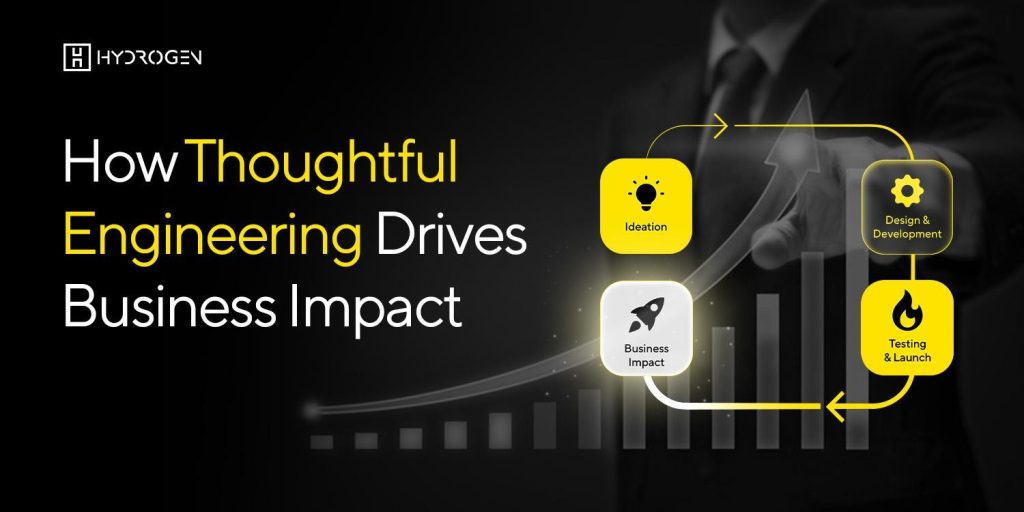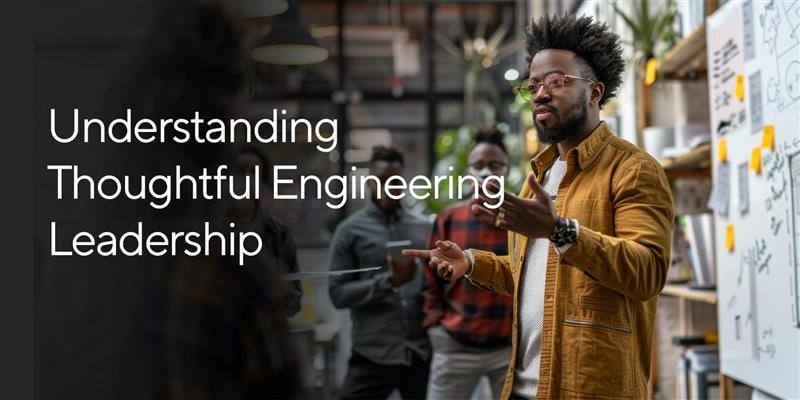How Thoughtful Engineering Drives Business Impact

By Taofeek Akintola, Head of Engineering, Hydrogen
Engineering Mindset Powers Fintech Transformation
A decade ago, a payment system failure might have gone unnoticed for days. Today, even a few seconds of downtime can shake user trust, trigger regulatory alerts, and result in lost revenue. In fintech, every line of code can either drive growth or introduce risk.
At Hydrogen, our approach to engineering is built on a single principle: intent. We are not just solving technical problems. We are solving business problems securely, sustainably, and at scale.
- Understanding Thoughtful Engineering Leadership

Thoughtful engineering leadership combines technical depth with business clarity. It is not just about writing performant code. It is about designing systems that align with strategic objectives.
In fintech, where stability, compliance, and rapid iteration are critical, this kind of leadership is a competitive advantage. It connects architecture to growth, team health to product velocity, and technology choices to measurable impact.
- The Fintech Context: Why Alignment Matters
Fintech teams operate under:
- Intense regulatory scrutiny
- Rapidly evolving customer expectations
- High availability demands
- Deep integration layers across financial partners
When engineering and business strategies are not aligned, delivery slows, compliance risks grow, and customer satisfaction drops. According to CBN, aligned digital teams can deliver up to 40% more value from investments.
Thoughtful engineering leaders act as connectors across compliance, finance, and product. They ensure every sprint is grounded in clear priorities.
- Business-First Thinking
Technical roadmaps should be shaped by business needs, whether that means reducing transaction latency, improving fraud prevention, or optimising onboarding flows.
At Hydrogen, we ensure engineering outcomes support commercial outcomes. For example, linking authentication improvements directly to fraud cost reductions. Fintechs that connect engineering priorities with business metrics report up to 35% higher feature adoption (EFInA, 2024).
- Engineering for Compliance and Trust
Trust is the currency of fintech. It is not enough to ship fast. Teams must ship safely. That means embedding compliance from the first design document to the last production deployment.
Hydrogen engineering teams undergo continuous training in PCI-DSS and SOC 2 and apply security checks throughout the SDLC. With global regulatory penalties from tech failures exceeding five billion dollars in 2023 (NDIC), thoughtful risk management is non-negotiable.
- Tech Strategy as a Value Lever
Technology should accelerate rather than slow down delivery. At Hydrogen, our modular architecture enables rapid experimentation without compromising compliance. Internal platforms automate controls, allowing teams to build confidently and quickly.
This strategy has improved developer productivity and reduced time to market. For instance, one team used shared tooling to cut launch time by 30%. According to NIBSS, firms that integrate engineering and commercial strategy outperform peers in financial outcomes.
- Balancing Speed with Stability

Fintech teams walk a tightrope between agility and reliability. Hydrogen’s framework, Quality Gates and Iteration Loops, helps us manage that balance.
Quality Gates include:
- Automated unit and integration tests
- Secure code reviews
- Threat modelling for high-risk workflows
- CI/CD pipelines with policy checks
Iteration Loops involve:
- Delivering thin, testable features
- Gathering user feedback quickly
- Running cross-functional reviews
- Learning from real-world performance
This cycle improves feedback time and software quality. The National Bureau of Statistics reports that fintechs using iterative feedback improve quality outcomes by over 40%.
- Building Empathy into Engineering
Some of Hydrogen’s best product improvements have come not from technical brainstorms but from engineers listening to user frustrations. These moments happen on merchant calls, in dispute channels, or alongside fraud analysts.
Empathy leads to better decisions. Whether it is simplifying a dashboard or resolving a failed transaction, seeing through the customer’s lens helps teams ship solutions that work.
CBN findings suggest that embedding engineers in user-facing functions directly improves customer satisfaction and reduces internal rework.
- Leading Through Influence, Not Control
Strong engineering cultures are built on influence, not command. At Hydrogen, our leaders create alignment by:
- Clarifying goals
- Creating psychological safety
- Encouraging experimentation
This mindset helps us scale resilient systems and confident teams. It also ensures engineering is seen not just as a delivery function. It is seen as a strategic partner.
Final Thoughts
At Hydrogen, we build with intention, from architecture to onboarding. Thoughtful engineering is how we align code with commerce and compliance with customer value.
Curious how we turn thoughtful engineering into business impact? Explore more of our insights on how Hydrogen builds with purpose.
 Transacting at the speed of light
Transacting at the speed of light 